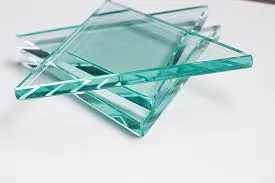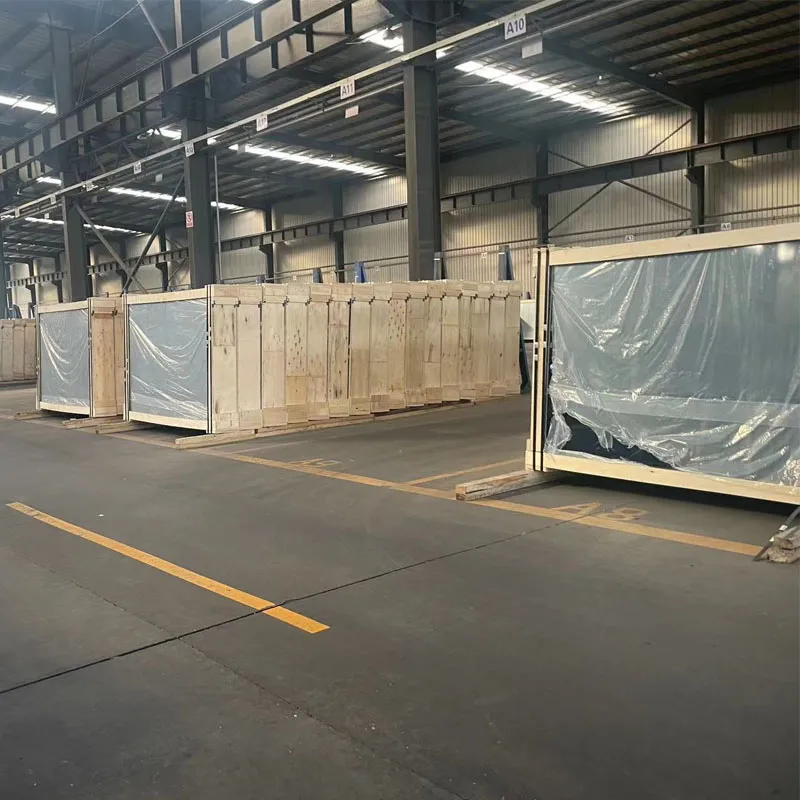When examining the differences between tempered glass and regular glass, it’s important to consider a range of factors, from their manufacturing process to their uses and safety features. These nuances not only differentiate the two but also dictate their unique applications across various industries.

Tempered glass, also known as toughened glass, undergoes a thermal manufacturing process where it is heated to over 600 degrees Celsius and then rapidly cooled. This process, known as quenching, creates internal stresses within the glass that enhance its strength compared to regular glass. In fact, tempered glass is often four to five times stronger than its non-tempered counterparts.
One of the standout features of tempered glass is its breaking pattern. When it does break, it shatters into small, blunt pieces that are less likely to cause injury, contrasting with the sharp, jagged shards produced by regular glass. This characteristic makes tempered glass a safer option for environments where human impact is a concern, such as shower doors, vehicle windows, and architectural applications like skyscraper windows.

Furthermore, tempered glass excels in thermal resistance. Unlike regular glass, which can fracture under sudden temperature changes, tempered glass withstands considerable thermal stress. This makes it indispensable in scenarios involving fluctuating temperatures, such as oven doors and thermal baths, where regular glass would otherwise fail.
The superiority of tempered glass extends to its load capacity. It is not only a favorite for heavy-duty applications but also a standard in industries requiring high impact resistance without compromising clarity or functionality. For instance, in the tech arena, tempered glass screen protectors are preferred for smartphones and tablets, providing users with enhanced screen protection while maintaining touch sensitivity and clarity.
what is the difference between tempered glass and regular glass
Regular glass, or annealed glass, stands apart primarily due to its production simplicity and cost-effectiveness. Simple to produce and easy to cut, regular glass finds its niche in applications where increased strength and thermal resistance are less critical. For budget-conscious projects, especially those that do not face stress or trauma, regular glass remains a valid option.
However, regular glass's limitations become evident under conditions of force or stress, where it tends to crack and break into hazardous pieces. This serves as a crucial point when considering applications such as interior decorations or situations where safety glazing is unnecessary. Its primary use remains in picture frames, tabletop glass, and in glazing where speed and economy are prioritized over strength and safety.
Despite the strengths of tempered glass, regular glass can still offer advantages in certain specialized applications. For example, annealed glass is more amenable to post-manufacturing modifications like etching and shaping, which can be essential for bespoke glass artistry and customized installations where intricate designs are a priority.
In conclusion, the choice between tempered glass and regular glass should be dictated by the balance of safety, strength, application environment, and budgetary constraints. Understanding these differences is not merely a technical endeavor but a strategic one that considers the practical, aesthetic, and economic implications of each material. As an informed consumer or industry professional, acknowledging these particulars ensures that the selected glass type will fulfill performance expectations while providing safety and durability in its intended application. This knowledge enhances decision-making processes, ultimately leading to smarter, safer, and more cost-effective use of glass in everyday and specialized applications alike.
 Afrikaans
Afrikaans  Albanian
Albanian  Amharic
Amharic  Arabic
Arabic  Armenian
Armenian  Azerbaijani
Azerbaijani  Basque
Basque  Belarusian
Belarusian  Bengali
Bengali  Bosnian
Bosnian  Bulgarian
Bulgarian  Catalan
Catalan  Cebuano
Cebuano  Corsican
Corsican  Croatian
Croatian  Czech
Czech  Danish
Danish  Dutch
Dutch  English
English  Esperanto
Esperanto  Estonian
Estonian  Finnish
Finnish  French
French  Frisian
Frisian  Galician
Galician  Georgian
Georgian  German
German  Greek
Greek  Gujarati
Gujarati  Haitian Creole
Haitian Creole  hausa
hausa  hawaiian
hawaiian  Hebrew
Hebrew  Hindi
Hindi  Miao
Miao  Hungarian
Hungarian  Icelandic
Icelandic  igbo
igbo  Indonesian
Indonesian  irish
irish  Italian
Italian  Japanese
Japanese  Javanese
Javanese  Kannada
Kannada  kazakh
kazakh  Khmer
Khmer  Rwandese
Rwandese  Korean
Korean  Kurdish
Kurdish  Kyrgyz
Kyrgyz  Lao
Lao  Latin
Latin  Latvian
Latvian  Lithuanian
Lithuanian  Luxembourgish
Luxembourgish  Macedonian
Macedonian  Malgashi
Malgashi  Malay
Malay  Malayalam
Malayalam  Maltese
Maltese  Maori
Maori  Marathi
Marathi  Mongolian
Mongolian  Myanmar
Myanmar  Nepali
Nepali  Norwegian
Norwegian  Norwegian
Norwegian  Occitan
Occitan  Pashto
Pashto  Persian
Persian  Polish
Polish  Portuguese
Portuguese  Punjabi
Punjabi  Romanian
Romanian  Russian
Russian  Samoan
Samoan  Scottish Gaelic
Scottish Gaelic  Serbian
Serbian  Sesotho
Sesotho  Shona
Shona  Sindhi
Sindhi  Sinhala
Sinhala  Slovak
Slovak  Slovenian
Slovenian  Somali
Somali  Spanish
Spanish  Sundanese
Sundanese  Swahili
Swahili  Swedish
Swedish  Tagalog
Tagalog  Tajik
Tajik  Tamil
Tamil  Tatar
Tatar  Telugu
Telugu  Thai
Thai  Turkish
Turkish  Turkmen
Turkmen  Ukrainian
Ukrainian  Urdu
Urdu  Uighur
Uighur  Uzbek
Uzbek  Vietnamese
Vietnamese  Welsh
Welsh  Bantu
Bantu  Yiddish
Yiddish  Yoruba
Yoruba  Zulu
Zulu 


